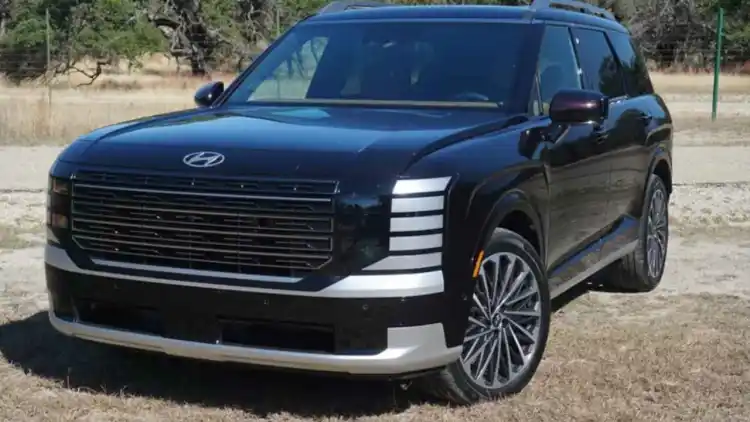- Quick Specifications
- Design and Dimensions
- Interior and Technology
- Driving Experience
- Safety and Driver‑Assist Suite (Toyota Safety Sense 3.5 +)
- “The Wanderer and the Hybrid Heart”
- Competition and Market Position
- Pros and Cons
Nearly three decades since the RAV4 created the crossover segment, Toyota has unveiled a completely reimagined sixth generation for 2026 — a model that fuses rugged appeal with hybrid‑only propulsion across the lineup. This marks the most significant transformation in the SUV’s history since the early 2000s, taking the RAV4 from a practical family hauler to a symbol of Toyota’s electrified evolution.
With options ranging from the everyday SE and XSE to the adventure‑ready Woodland Edition and performance‑tuned GR Sport PHEV, the new RAV4 lineup caters to every type of driver — urban, family, or explorer alike.

Quick Specifications
52 miles (84 km) electric‑only range – 23 % increase vs 2025 model |

Design and Dimensions
For 2026, Toyota has given the RAV4 a tougher, more purposeful stance — a design inspired by its big brother, the 4Runner.
Three distinct themes: Core (SE, XSE, Limited), Rugged (Woodland), and Sport (GR Sport PHEV).
Simplified, muscular lines and a larger cross‑hatch grille announce its hybrid identity.
Woodland Edition adds flared arches, off‑road tires, a roof rack, and factory tow hardware.
GR Sport Variant: sport‑tuned suspension, aggressive bumper design, and optional 20‑inch performance wheels.
From almost any angle, the 2026 RAV4 feels closer in proportion to a Highlander than its predecessor — a testament to how the compact SUV category has grown.

Interior and Technology
Inside, the RAV4 adopts a functional, “4Runner‑like” layout focused on durability and usability:
Dashboard: Squared‑off controls and physical knobs restore a practical feel often lost to digital minimalism.
Multimedia: Toyota’s latest Arene‑based infotainment system with 10.5 or 12.9‑inch touchscreen and 12.3‑inch digital driver display.
Smart Connect: Wireless Apple CarPlay and Android Auto.
Clever Center Console: Dual‑hinge lid that opens from either side and doubles as a tray for notes or snacks.
Space: Comfortably fits 6 ft 6 in passengers with best‑in‑class rear legroom.
The Woodland adds waterproof floor mats and adventure‑themed interior accents, while the Limited trim introduces synthetic leather upholstery and ambient lighting.

Driving Experience
1. Every Model Is Electrified
This generation drops gas‑only variants entirely — every trim is hybrid or PHEV.
FWD Hybrid: 226 hp and 44 mpg combined.
AWD Hybrid adds a rear electric motor for 236 hp and greater traction.
PHEV AWD “GR Sport”: 324 hp with a 52‑mile EV range and 11 kW charger for faster AC charging.
2. Handling and Comfort
Newly reinforced chassis and retuned suspension add refinement.
Steering remains light yet accurate for urban maneuvers.
Suspension absorbs rough roads without feeling floaty.
The GR Sport’s performance tune delivers a balanced ride with minimal body roll.
3. Off‑Road Capability
The Woodland PHEV demonstrated remarkable traction on gravel and dirt roads despite its city‑friendly roots.
Hill‑descent control and multi‑terrain AWD ensure confidence on mild trails.

Safety and Driver‑Assist Suite (Toyota Safety Sense 3.5 +)
Adaptive Cruise Control with Stop & Go
Lane Assist & Center Tracking
Blind‑Spot Warning and Rear‑Cross Traffic Alert
Full 360º Camera System
Automatic High Beams and Traffic Sign Recognition
Emergency Steering Assist
Toyota has also added an improved Driver Attention Monitor and cross‑traffic auto‑braking feature.
“The Wanderer and the Hybrid Heart”
A traveler once drove through the Arabian desert in a new RAV4 Hybrid. Distances vanished in silence as the car glided, powered by two hearts — one electric, one combustion. When the winds rose and the sand thickened, the SUV pressed on with quiet determination. Upon returning, the traveler said: “It was not the engine that moved me, but the balance within.”
Moral: Innovation isn’t about power alone — it’s about harmony between efficiency, comfort, and spirit.
Competition and Market Position
Honda CR‑V: Remains reliable but less powerful and less efficient.
Mazda CX‑50/CX‑5: Offer sharper handling but weaker hybrid tech.
Hyundai Tucson Hybrid: Loaded with features, though cannot match Toyota’s track record for longevity.
Ford Bronco Sport: More rugged, less eco‑friendly.
VW Tiguan: Well‑built but doesn’t approach the RAV4 in fuel efficiency.
At the $50,000 top end (loaded PHEV trims), the RAV4 faces stiff competition from entry‑level luxury SUVs — but no other offers its blend of hybrid tech and resale value yet.
Pros and Cons
Pros
Powerful and efficient hybrid systems.
Up to 52‑mile electric range in PHEV.
Intuitive tech and clever interior details.
Superior ride comfort and quiet cabin.
Cons
e‑CVT transmission still uninspiring.
Prices approaching luxury territory in upper grades.
The Toyota RAV4 2026 represents the SUV’s most complete evolution to date — bigger, smarter, and finally worthy of its heritage. Toyota’s decision to go all‑hybrid across the lineup cements its lead in practical electrification — and the RAV4 now strikes the perfect balance of utility, performance, and eco‑conscious design.
For buyers seeking a versatile daily SUV with long‑term reliability and modern character, this is the RAV4 reborn — and ready for a new generation of drivers.












